In the Summer of 1993, I was 13 years old and spending my Summer vacation visiting my father in Indiana. It was good to see him again. My mother and I had moved to Florida the year before, so I didn’t get to see him so much anymore. Two weeks with my dad felt like heaven on Earth. Late nights spent watching “so bad they’re good” horror movies until 4:00 am, binging on popcorn and Mike and Ikes. My dad introduced me that Summer to B-movies like The Brain That Wouldn’t Die, The Alligator People, and Plan 9 From Outer Space. An avid collector of all things horror and sci-fi in nature, my dad had boxes upon boxes of well-preserved magazines in his den. Among the stacks of Famous Monsters of Filmland, Filmfax, and Scarlet Street was a new magazine he’d begun collecting that I’d never seen before. That magazine was called Femme Fatales, and it would two years later become the beginning of my career as a writer. I suppose a more appropriate title for this article might have been, “I Was A Teenage Femme Fatales Writer” … but I’m getting a little ahead of myself here.
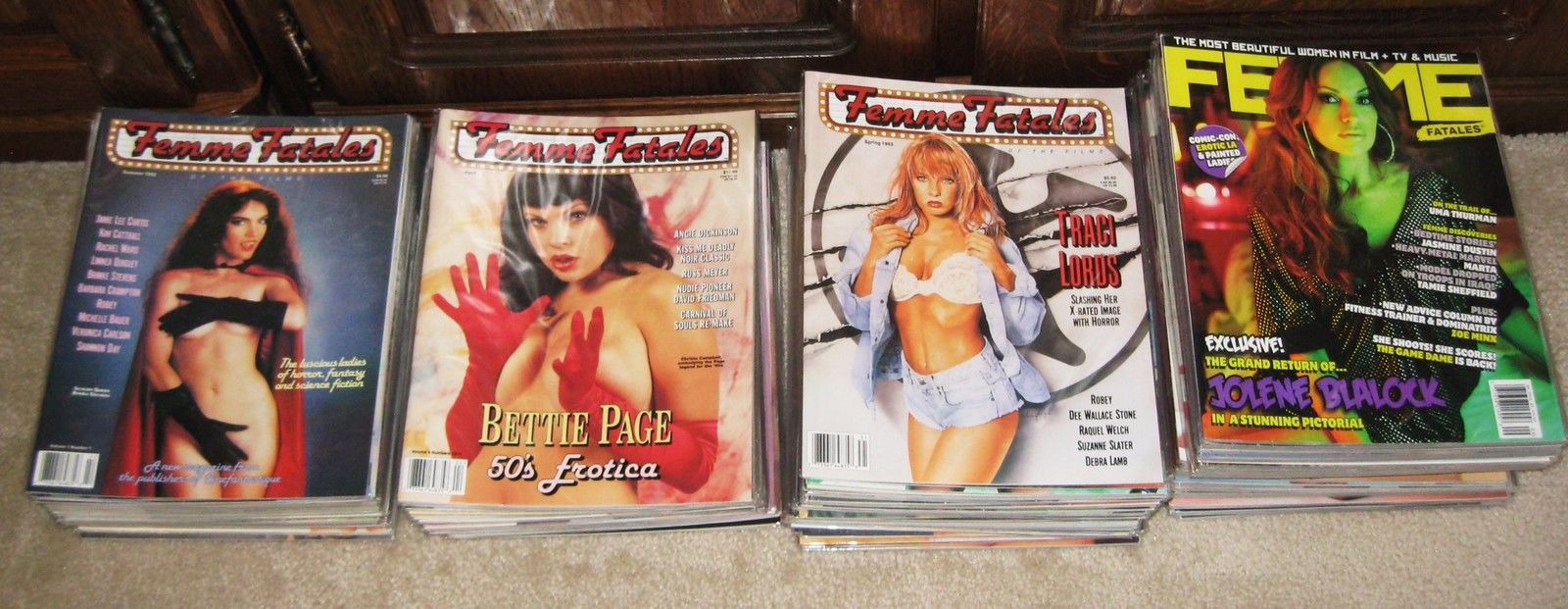
As I sat there on the floor of my father’s den, pouring over scantily clad women wielding knives and bad-ass babes with guns, I had no idea what my future held. That I would one day get to speak to many of these women, much less actually meet or form friendships with them was not even a forethought. I was just a pimply faced kid, wondering how I could get my hands on some of these movies.
Thankfully, my father had stacks of those too.
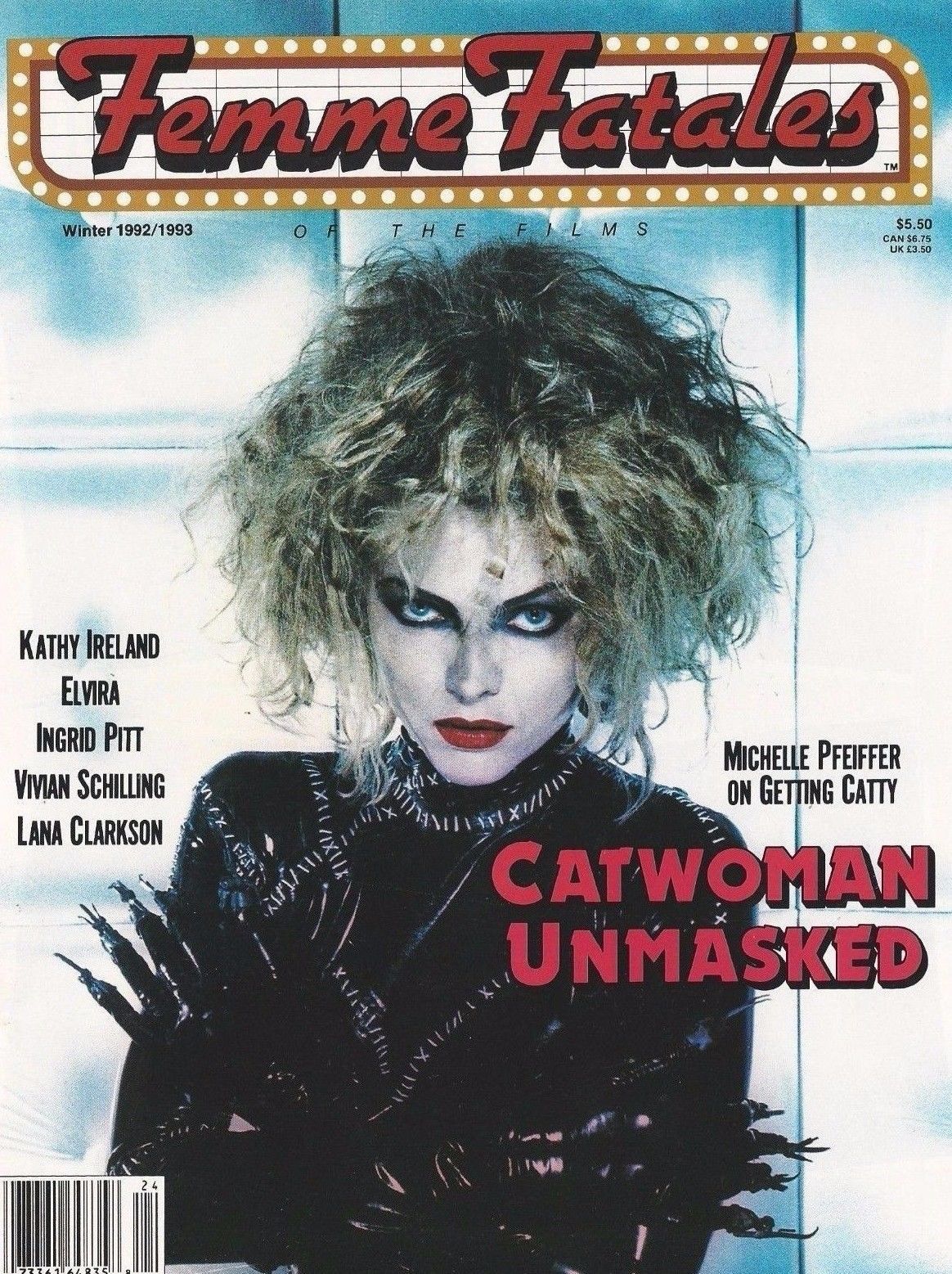 Femme Fatales had launched just one Summer before in 1992, the “sister pub” to Frederick S. Clarke’s Cinefantasique magazine which he’d been publishing since before 1960. To be clear, Femme Fatales was not a “men’s magazine.” It was easily accessible to all ages, and was not, by law at least, considered to be pornographic. Though the women may have been wearing next to nothing, they were never (maybe rarely) completely nude. Michelle Pfeiffer, Carrie Fisher, Sigourney Weaver, Terri Hatcher, and many more had not only granted exclusive interviews to the publication, but had even graced its cover, making it a perfectly legitimate mainstream magazine in its own right. Yet, the majority of its glossy pages were filled with B-movie starlets and scream queens, the kind of girls you’d see on late night TV – especially Cinemax.
Femme Fatales had launched just one Summer before in 1992, the “sister pub” to Frederick S. Clarke’s Cinefantasique magazine which he’d been publishing since before 1960. To be clear, Femme Fatales was not a “men’s magazine.” It was easily accessible to all ages, and was not, by law at least, considered to be pornographic. Though the women may have been wearing next to nothing, they were never (maybe rarely) completely nude. Michelle Pfeiffer, Carrie Fisher, Sigourney Weaver, Terri Hatcher, and many more had not only granted exclusive interviews to the publication, but had even graced its cover, making it a perfectly legitimate mainstream magazine in its own right. Yet, the majority of its glossy pages were filled with B-movie starlets and scream queens, the kind of girls you’d see on late night TV – especially Cinemax.
Femme Fatales couldn’t have arrived on newsstands at a better time. The early 90’s had seen the great boom of the video rental store. Chains like Blockbuster were begging production companies to send them more titles to add to their stock. Seeing as horror and sci-fi were the most rented among teenagers, if you made a fright flick with a handheld camera in 1993, chances are you could have gone direct to video with Blockbuster. Thankfully for those of us renting these titles, a small handful of ambitious filmmakers did more than just pick up the amateur lens. They strived then, as I’d imagine they continue to strive now, to do what Roger Corman did before them – to produce a thoroughly entertaining movie on a shoestring budget that would sell. The three men who did that the best, as I’d imagine they continue to do it the best, are Fred Olen Ray, Jim Wynorski, and David DeCoteau.
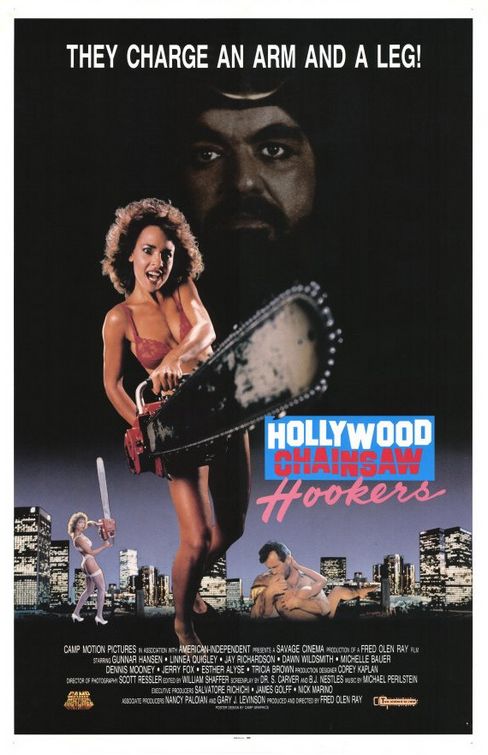 These movies were usually comprised of three elements: A few scares, a lot of laughs, and a good handful (so to speak) of T&A. For you youngsters out there, that’s what we used to refer to in filmland as: Tits and ass. Of course, to get their needed dose of T&A, they’d have to find actresses who were willing to wield chainsaws, get splattered with blood, go running through the woods after midnight in the nude, scream their lungs off while getting chased by guys with drills (that’s not phallic) or my personal favorite, mauled by evil cartoons. (That one’s called, Evil Toons. If you haven’t seen it, it’s a must.)
These movies were usually comprised of three elements: A few scares, a lot of laughs, and a good handful (so to speak) of T&A. For you youngsters out there, that’s what we used to refer to in filmland as: Tits and ass. Of course, to get their needed dose of T&A, they’d have to find actresses who were willing to wield chainsaws, get splattered with blood, go running through the woods after midnight in the nude, scream their lungs off while getting chased by guys with drills (that’s not phallic) or my personal favorite, mauled by evil cartoons. (That one’s called, Evil Toons. If you haven’t seen it, it’s a must.)
As you can imagine, not every actress in Hollywood was willing to go to these lengths just to fill up a resume or to become a ‘celebrity’ you could rent at your local Blockbuster. But again, thankfully for us, a few of them were. The three women who did that the best, as I’d imagine they continue to do it the best, are Brinke Stevens, Michelle Bauer, and Linnea Quigley. These were the top ‘scream queens’ of the day, and they were featured so prominently in Femme Fatales magazine, Brinke herself ended up becoming a regular staff writer.
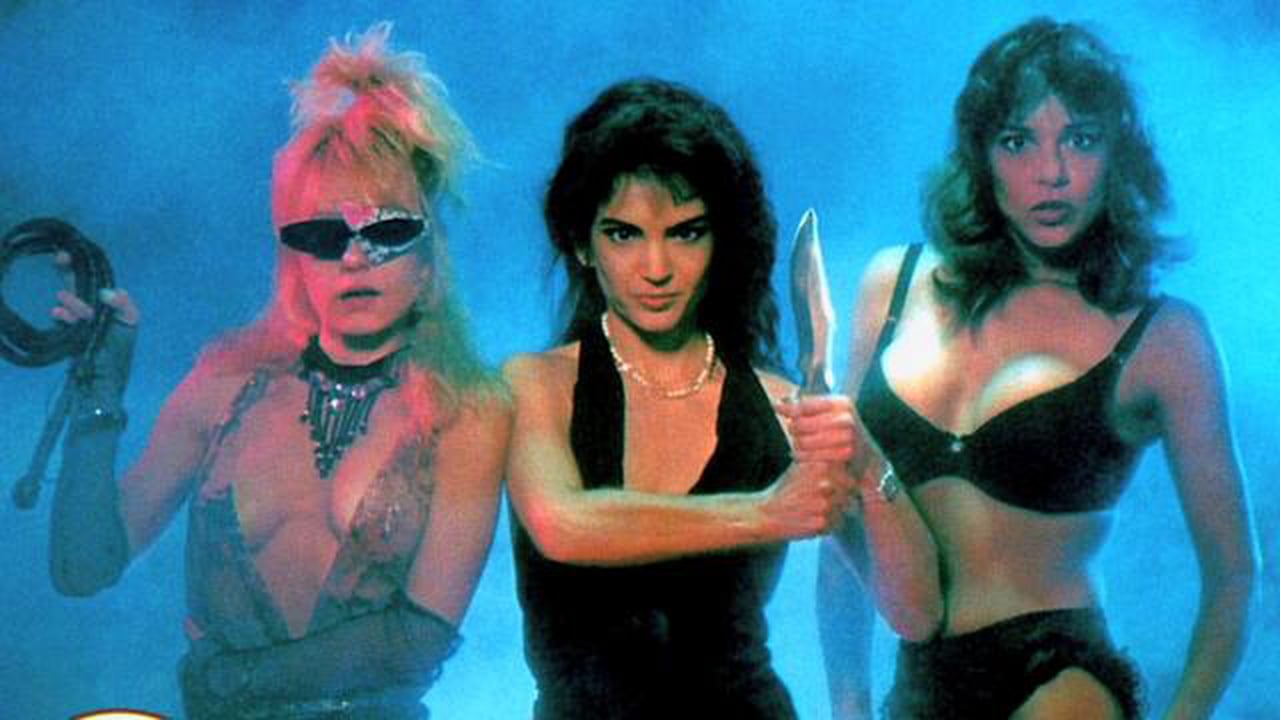 Linnea Quigley (left), Brinke Stevens (center), and Michelle Bauer (right) …then.
Linnea Quigley (left), Brinke Stevens (center), and Michelle Bauer (right) …then.
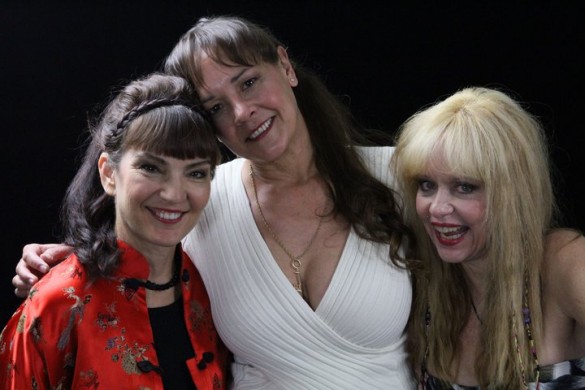 Brinke Stevens (left), Michelle Bauer (center), and Linnea Quigley (right) …now.
Brinke Stevens (left), Michelle Bauer (center), and Linnea Quigley (right) …now.
I became obsessed with these movies. Hollywood Chainsaw Hookers, Nightmare Sisters, Sorority Babes in the Slimeball Bowl-A-Rama, Teenage Exorcist, Attack of the 60 Ft. Centerfold. I especially enjoyed Dave DeCoteau’s work, as his camera would linger just as long on a beautiful man’s body as it would on a naked woman’s. Even at 13, I knew what I liked.
Why then, you might ask, if I wasn’t in it for the T&A, had I been so attracted to this magazine in the first place? Well, there are two reasons.
For one thing Femme Fatales never depicted women being threatened with guns or knives. In this magazine, they were the victors, not the victims. There was something oddly feminist about the statement it was making just beneath its softcore imagery. Femme Fatales was on the precipice of a movement that was happening all over the world in the early 90’s, one that had perhaps been started by mainstream artists like Madonna in the early 80’s. Women everywhere were starting to own their sexuality. Gone was the bra burning. It had been exchanged for lingerie wearing. Women of this new generation choose to make a different statement than their predecessors had made. This fresh statement was: You can be sexy, and intelligent at the same time. You can be sexy, and have something to say. You can be sexy, and strong. This is what Femme Fatales magazine was all about, and as a 13 year old with an absolute adoration for strong women, I could smell that message within its pages.
… Also, my dad really liked these movies, and I wanted to be just like him.
I went back to Florida with a few of the magazines my father had let me keep in hand, and I ordered the back issues so I could start my own collection. After about a year or so, I had amassed such a treasure trove of movies and magazines, that I decided to start adding autographed photos to the mix. In the back of Femme Fatales was a listing of fan clubs for where you could write to the women who had been featured in the issue. I would send letters, about a page long each, to all of them, along with a self-addressed stamped envelope. I would tell them how I’d learned of their movies, how I was only a kid, but my father and I were both big fans, and then I would ask for them to send an autographed picture back to me in the mail. Usually, they would arrive back within a week or two, with a signed headshot, and maybe if I was lucky a post-it note attached thanking me for the kind words. This was standard, I supposed. No one had time to write me back a real letter. This wasn’t an association of pen pals, after all, was it?
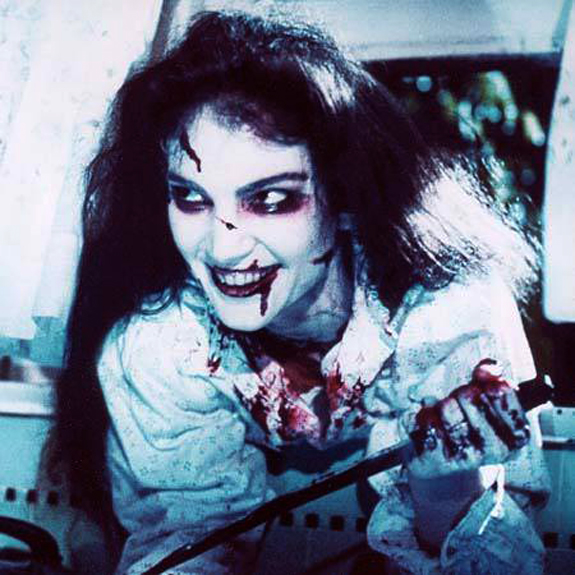 You can imagine my surprise when one day I trekked to the mail box to see my first reply from the Queen of the B’s herself, Brinke Stevens. At the time, Brinke had appeared in over 50 horror movies. Today, I think it’s more like 150. She was also the very first woman to grace the magazine’s cover. I opened the envelope and found within it a 3-page letter, front and back, hand-written from Brinke herself. She not only thanked me for the kind words, but told me about all her latest projects, and invited me to come meet her at a convention where she would be appearing in Florida later that month.
You can imagine my surprise when one day I trekked to the mail box to see my first reply from the Queen of the B’s herself, Brinke Stevens. At the time, Brinke had appeared in over 50 horror movies. Today, I think it’s more like 150. She was also the very first woman to grace the magazine’s cover. I opened the envelope and found within it a 3-page letter, front and back, hand-written from Brinke herself. She not only thanked me for the kind words, but told me about all her latest projects, and invited me to come meet her at a convention where she would be appearing in Florida later that month.
I immediately called my father and read him the letter. He was just as shocked as I, and thought he might need to make a trip to Florida himself for said convention.
And so it was in the Summer of 1995 that I attended Necronomicon in Tampa, Florida, where I came face to face to Brinke Stevens, a meeting that would change my life forever. I was 15 years old, probably the youngest person at the convention. Brinke made all my dreams come true that weekend. After I met her at her table for an autograph, she invited me to dinner with a few of her friends – horror movie writers, directors, and a few other actresses. I was in hog heaven! Things couldn’t get any better. At least, I thought they couldn’t until Brinke leaned over and whispered into my ear, “After dinner, I was thinking I might enjoy the hot tub for a while by the pool. You want to join me?”
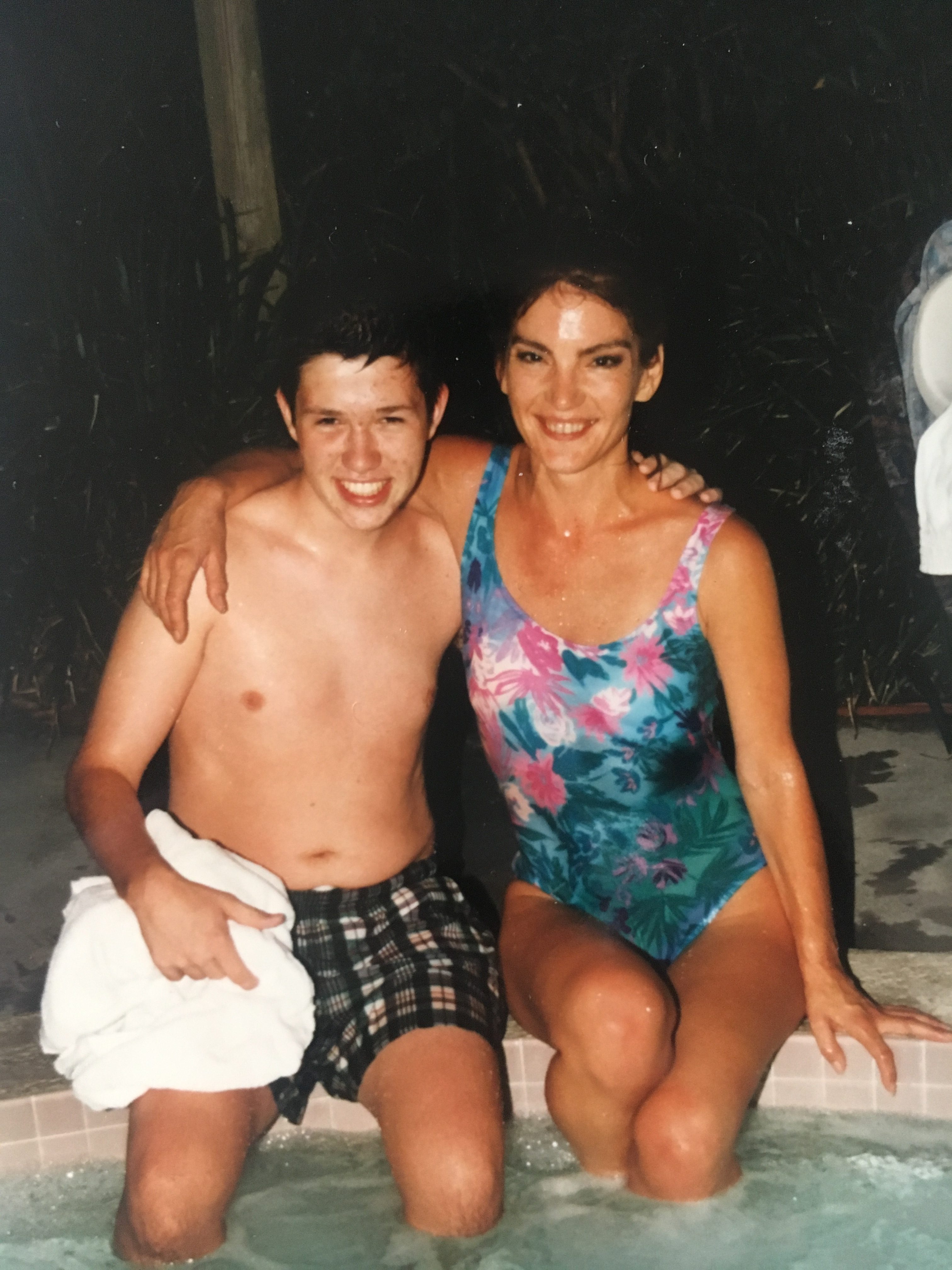 My father got about 10 seconds of that on videotape I think before I banished him to the hotel room so I could talk to Brinke in private. What on earth we could have possibly talked about, I can’t recall, but whatever it might have been, it was good enough for me to go home and write an article about it, which I promptly submitted to Femme Fatales magazine. The article was called “On The Brinke of a Friendship.”
My father got about 10 seconds of that on videotape I think before I banished him to the hotel room so I could talk to Brinke in private. What on earth we could have possibly talked about, I can’t recall, but whatever it might have been, it was good enough for me to go home and write an article about it, which I promptly submitted to Femme Fatales magazine. The article was called “On The Brinke of a Friendship.”
A few weeks went by, and I heard nothing back regarding my submission. Somehow, at the tender age of 15 I had been instilled with a certain tenacity and ambition that I still don’t fully comprehend, one which created a fire within me that said I must persist. So I looked up the phone number for the office of Femme Fatales, and I called. No one answered. I called again a few days later. This time I left a message.
When I called back a third time, I began to leave a second message when I was interrupted by someone picking up the phone.
“Hello?” a voice answered.
“Oh, I was just leaving a message,” I explained.
“Yes, you said you’re who?”
“Jason Sechrest, I submitted an article to you a few weeks ago?”
“Ah yes, hello Jason. Bill George, here.”
I was a bit taken aback. It was not a secretary, or an assistant, or a staff writer who had picked up the phone. It was the editor-in-chief of Femme Fatales magazine himself, Bill George.
“Listen, I read your article. The last thing we need right now is another piece on Brinke Stevens. You’re a great writer though. How would you like your own column?”
I dropped the phone. When I picked it up, Bill was still rattling on. “We need someone to take over Fatale Attractions. I wouldn’t be able to get you a by-line for the next couple of issues, but I’ll talk about you in the opening letter from the editor, and we’ll pay you for your work.”
I could hardly speak. In fact, I didn’t speak. For quite some time.
“Hello? Is this thing on?” Bill asked.
“Yes, of course! Whatever you need, sir. Just tell me what you need for me to do, and I’ll be glad to do it.”
Fatale Attractions as it turned out, was a column that contained about a dozen or so little blurbs per issue highlighting new projects in the works. To obtain the quotes needed, I would have to call roughly 20 to 30 different actresses a month. Long distance. From Florida to California, in the days before “unlimited long distance” was even a thing. I was paid a few cents per word, but my poor mother paid hundreds of dollars in phone bills. When she became increasingly upset about the skyrocketing cost, I started making the calls from the local yogurt shop where I worked after school. When they got their phone bill, I was promptly let go. I could have cared less though. I was 15 years old, and on my way to becoming a published journalist. I was running around saying things I’d only previously heard in the movies like, “I’m on a deadline,” and “I have to call my editor.” I was officially in grown-up land.
The only problem was, Bill George didn’t know I was 15.
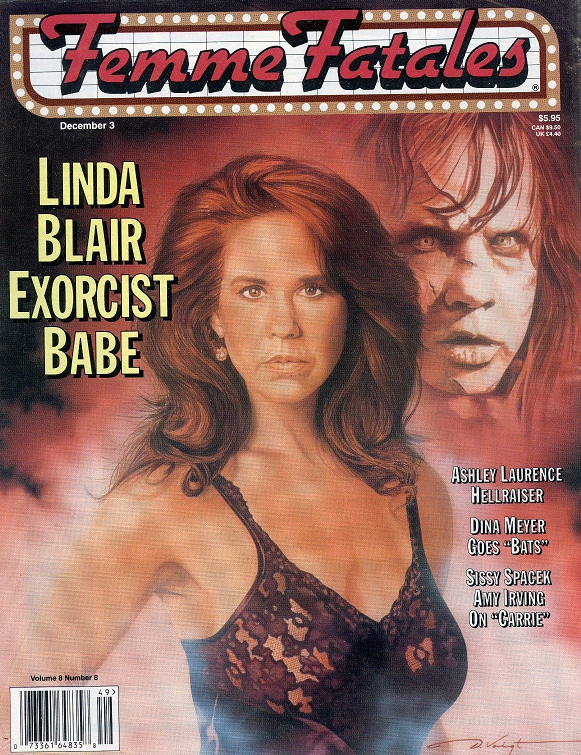 Neither did Linda Blair. My first assignment was to call Linda and find out about a new movie she was supposed to be making a cameo in for Wes Craven. “She’ll talk to you about the movie, but she’s going to want to plug her animal rights shelter or whatever it is,” Bill told me. “Tell her that’s fine, we’ll talk about all the lost puppies too. Just get the quote.”
Neither did Linda Blair. My first assignment was to call Linda and find out about a new movie she was supposed to be making a cameo in for Wes Craven. “She’ll talk to you about the movie, but she’s going to want to plug her animal rights shelter or whatever it is,” Bill told me. “Tell her that’s fine, we’ll talk about all the lost puppies too. Just get the quote.”
I called Linda, half expecting Ellen Burstyn to pick up the phone.
“Hello?” a voice answered. Linda might not look exactly like the teenage girl she played in The Exorcist anymore, but her voice has always remained the same. It was instantly recognizable.
“Hi, is this Miss Blair?” I asked.
“Who’s calling?”
“This is Jason Sechrest, I’m a cub reporter for Femme Fatales magazine. If you have a second, I’d like to ask you about – ”
“How did you get this number?”
“Well, you see, Bill George told me to call and ask you about – ”
“BILL GEORGE gave you my home phone number?!”
“Well, um… you see, we’ve got this column called Fatale Attractions, and if I could just get a quote from you about – ”
Click!
Dejected on my first assignment, I put off calling Bill to avoid delivering the bad news for a couple of days. I thought for sure I’d be axed before my job had even begun. When I finally called, I was leaving another message on the machine when Bill picked up and said, “Yeah listen, Linda called. She’s not happy.”
“Mr. G-George,” I stumbled. “I think I should confess something to you. I’m 15 years old.”
There was a long pause on the other end. Eventually, Bill George began to laugh. “Oh wait until I tell Linda. She’ll feel awful. She already felt bad that it was your first assignment and she hung up on you.”
“I hope my age won’t prevent me from doing the column.”
“You’ve got great writing chops, kid. You’re a natural. I don’t see any reason why I shouldn’t hire you.”
Bill asked me to wait a few days and to try Linda again. This time, she was extremely pleasant and apologized. “I really don’t like people infringing on my privacy,” she explained, “but I spoke with Bill and I want you to know it really wasn’t your fault. You were just doing your job, I understand. …Now, before I answer your question about the movie, I’d like to talk with you for a minute about the importance of animal rescue.”
 Just like that, it became my first professional job to interview and write about the women of the horror, sci-fi and fantasy genre. Bill George gave me many more actress’s home phone numbers over the course of the next several years – Jamie Lee Curtis, Bobbie Bresee, Dee Wallace Stone. Fortunately for me, none of their heads spun around like Linda’s had. They were always eager to talk and happy for the publicity. They seemed to love the magazine. Any woman who starred in these kind of movies felt like Femme Fatales was the one magazine that really “gets it.” The one that portrayed them as being strong, powerful, and most importantly, highly intelligent.
Just like that, it became my first professional job to interview and write about the women of the horror, sci-fi and fantasy genre. Bill George gave me many more actress’s home phone numbers over the course of the next several years – Jamie Lee Curtis, Bobbie Bresee, Dee Wallace Stone. Fortunately for me, none of their heads spun around like Linda’s had. They were always eager to talk and happy for the publicity. They seemed to love the magazine. Any woman who starred in these kind of movies felt like Femme Fatales was the one magazine that really “gets it.” The one that portrayed them as being strong, powerful, and most importantly, highly intelligent.
Most of them, I never told I was only a teenage boy. The ones I did tell were the ones I clicked with right off the bat, and those are the women with whom I became life-long friends. Sam Phillips, Jacqueline Lovell, Becky LeBeau, Kira Reed, and of course Brinke Stevens herself, who when I first called her at home, remembered me from the convention and laughed, “So Sparky’s joined the club!”
I eventually started writing feature articles for the magazine. Most of the time, Bill would completely rewrite everything I had turned in, including the quotes from the actresses – something that bugged the hell out of them. At first I thought it was just me, but upon speaking with other writers of the magazine in later years I discovered this is something Bill did with everyone. I no longer take offense. Hell, I didn’t take offense then either. I was just happy to see my name in print.
I met Bill George only once. My high school’s speech and debate club, of which I was an active member, had a tournament in Baltimore, Maryland. I was excited beyond belief to see the offices of Femme Fatales – where it all happens! I expected a small space with cubicles, perhaps a division between the offices of FF and Cinefantastique. But when I arrived at the address, it was a house.
I knocked on the door and an elderly woman answered. “I’m sorry,” I said. “I might have the wrong address. I’m looking for Bill George.”
“Bill!” she called upstairs, “One of your friends is here.”
It was Bill George’s mother. Bill lived in this house with her, and the Femme Fatales office was an attic. Stacks of old issues lined the walls and in front of them, glossy 8x10s and photo negatives were sprawled endlessly all over the floors. The room was lit by a lone dim lamp, and the top of Bill’s desk was so covered in manuscripts, photos, and books, it looked like it hadn’t seen the light of day in years.
It was surreal, but… something about it made me love Bill all the more. He had dedicated his entire life to this. It was all he did, night and day. He didn’t have an office of employees. He did the heavy lifting himself. The magazine consumed his every waking thought, and as such it was a reflection of him. Maybe that’s why he retooled so many of the articles featured therein. Bill George was Femme Fatales magazine. And when he left, it was never quite the same.
In the year 2000, Frederick S. Clarke, the magazine’s publisher, committed suicide. Around the same time, Bill George exited stage left as editor-in-chief. I stuck around for a little while. Lisa Coduto took over as editor for a short time, during which I was given my first cover story, an interview with Cassandra Peterson, better known as Elvira, Mistress of the Dark. It felt appropriate that it would be my final article for the magazine. The first issue my name had appeared in back in 1995 also had Elvira on the cover.
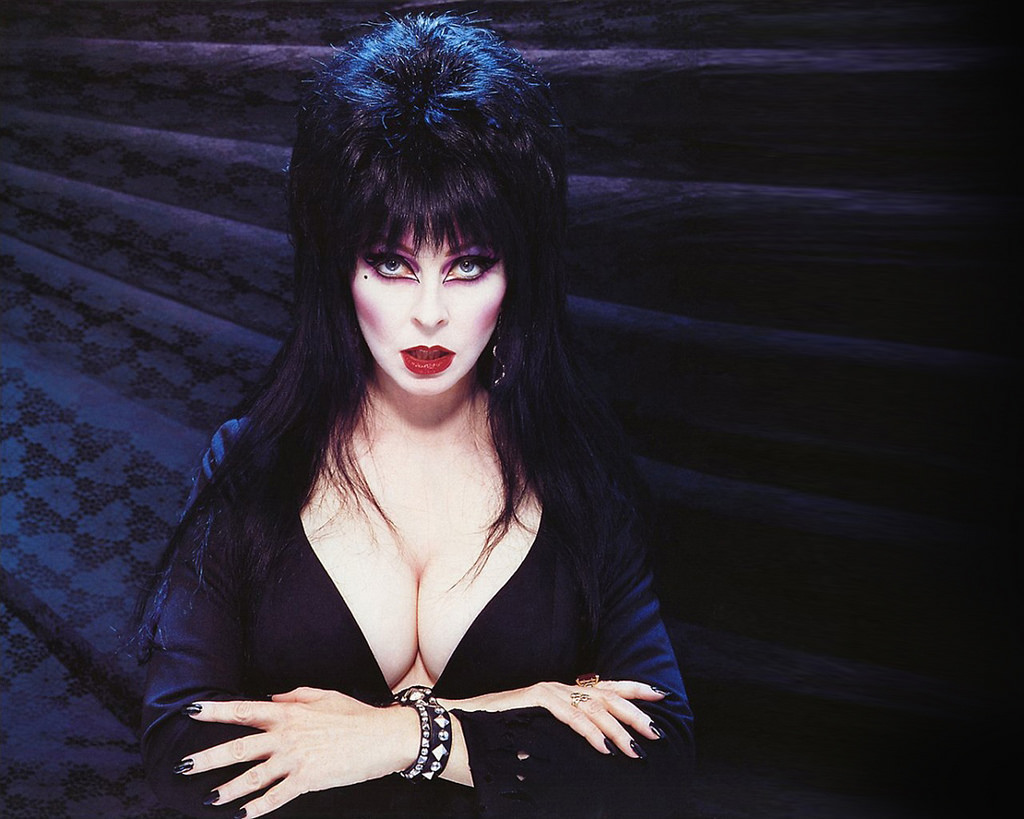 I was living in Hollywood by the time I got to interview Cassandra, which meant I could actually conduct the Q&A in person. We met at Jerry’s Deli for lunch. I’ll never forget sitting across from her, my little tape recorder running, as I worked up the courage to ask her, “What turns you on?”
I was living in Hollywood by the time I got to interview Cassandra, which meant I could actually conduct the Q&A in person. We met at Jerry’s Deli for lunch. I’ll never forget sitting across from her, my little tape recorder running, as I worked up the courage to ask her, “What turns you on?”
She smiled at me. “I have a thing for younger guys,” she said, her voice almost switching into that breathy Elvira speak. “Especially young gay boys.”
I turned bright red. Elvira, Mistress of the Dark, was flirting with me.
Her husband, Mark Pierson, who managed Elvira’s career meticulously, had a meltdown when he received the article for final approval. He demanded that it be stricken from the piece. Lisa complied, much to my personal dismay.
A few months later, Cassandra and Mark were divorced.
Truth be told, when it comes to stories like these? I’ve got dozens. Femme Fatales provided me with a lifetime of memories as fantastical as the movies in which its actresses starred. It also afforded me a portfolio from which several other magazines would hire me. It gave me my start, and for that I am eternally grateful.
In 2003, Femme Fatales went under new management and was revamped into a Maxim style magazine. It was well circulated enough, but for the many fans who had been flipping through its pages since that Summer in 1992, it had lost its magic. The final issue arrived on newsstands in September 2008.
With each passing year the printed word becomes more and more a thing of the past, due to new advancements in technology. Femme Fatales has become something of a collector’s item. I noticed someone selling a complete archive of every issue on eBay the other day for nearly $1000. Seems strange someone would spend that much money on these old magazines.
Then again, maybe it doesn’t.
For my father growing up in the 1960’s, Forrey Ackerman’s Famous Monsters of Filmland magazine had been like his teenage Bible.
Femme Fatales was that for me and many others. It was our generation’s lens into a world where beauty and bodaciousness was at long last married with brains and brawn. Every issue was like a Hallmark card to the women who graced it, and holy scripture to the hundreds who read it. It chronicled the direct-to-video scream queen era better than anyone has before or since.
Bill George has been elusive and hard to find in the last few years. I like to think that somewhere out there, he’s proud of his accomplishment. It was his baby, and as long as it lived under his roof, it flourished and thrived. I remember each time we would hang up the phone I would tell him, “Talk to you soon, Bill!” to which he’d reply, “I’ll be here indefinitely.”
With the indelible imprint of blood, sweat, and tears that he poured into his pet project, Femme Fatales will indeed be here indefinitely, living on in the hearts of all who cherished it.
Hey! Jason here… If you enjoyed this article, pleeeeease consider checking out and joining my Patreon page where you can get my short horror stories and more exclusive essays like this one for as low as $1 a month. Check it out at: http://patreon.com/JasonSechrest.

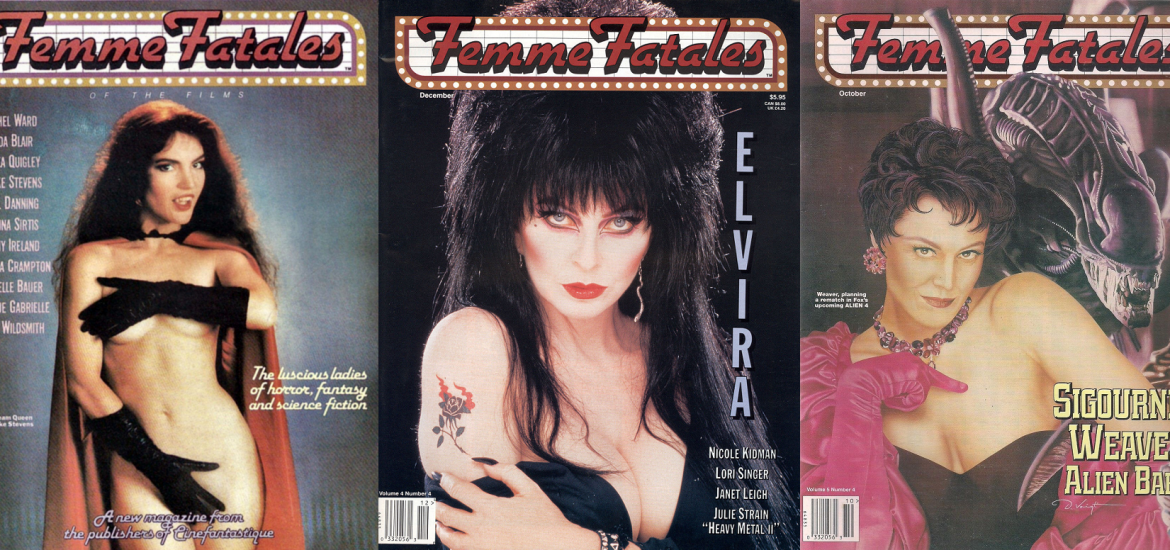



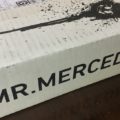
My mother knew Elvira when my mom lived in Oakland
No way! lol… Wow, that’s cool Marco.
Great story, you lucky dog!
Haha Thanks John! It was a wild ride! 🙂
Wow! Very inspiring that you were able to accomplish all of that at such a young age. I was an avid reader/collector of femme fatales and never missed an issue. Thank you for sharing your story, it was a great read and an awesome look into the making of a fantastic periodical. Thank you
It was a really special time for me, Jonny. One I’ll never forget. I think I still have a full set of every issue somewhere in storage. What cover was your favorite? Mine was always the first. The one felt iconic to me. There was one with Julie Strain that was only shades of pink and blue too, I thought that was really different and cool.
Nice! Brings back some great memories of writing a few interviews and articles for Femme Fatales myself many years ago, and yes Bill George rewrote most of my stuff too! Lost contact with him when he left FF, hope he’s well and if you do talk to him..send him my best from Mike in Hong Kong….
Mike, it’s my hope that this article brings Bill out of hiding. haha… It’s amazing how little is actually out there about Femme Fatales. When I googled it, I was surprised at the lack of articles about the magazine, so I decided to write one myself. If I or anyone I know hears anything from Bill, I’ll be sure to reach out and let you know.
I was the NY staff photographer for Femmes Fatales from 1997-2002. Some of the best times of my life were hanging out with Bill in Baltimore and doing photo shoots with starlets. Sadly, those days are only memories now.